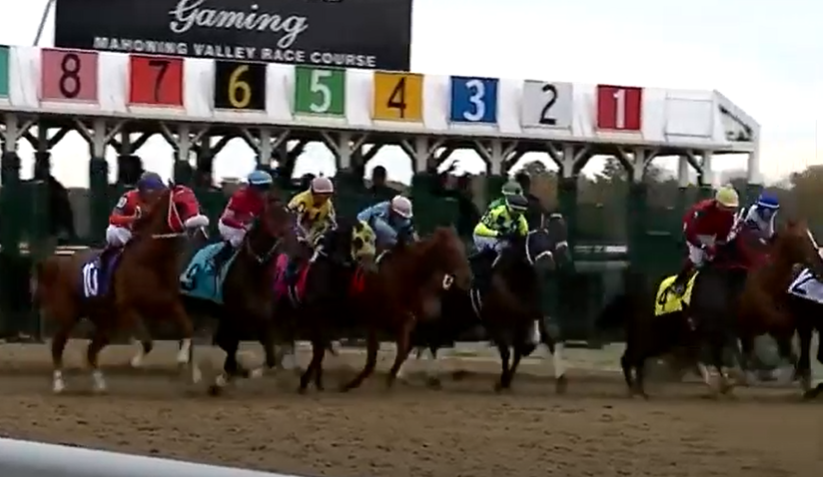
Source: WKBN 27 YouTube
By Michael O’Neill
The 2022 Central Bank Rate Hike Derby is off and running. It is an endurance race, akin to California’s Tevis Cup 100 mile chase rather than the Kentucky Derby’s one and a quarter-mile dash. The central banks of Great Britain, the European Union, the USA, Canada, and Australia are the only horses in the race, and the jockeys are vying for the Inflation-Drop Cup.
The Bank of England, rode by jockey Andrew Bailey, jumped to an early but tiny lead with a 0.15% rate increase on December 16. He stretched his lead with a 0.25% hike on February 3.
The Bank of Canada and the Fed are running neck and neck but still eating the dust from Mr Bailey’s horse. Still, that is a far better performance than the Reserve Bank of Australia. Jockey Philip Lowe is trying to leave the gate, but he is unsure of the direction. The ECB’s Christine Lagarde is a laggard; she’s not in the saddle but has left the gate.
Oddsmakers are having fun handicapping this race.
The Fed is the favorite after Chair Jerome Powell admitted somewhat reluctantly there is a chance inflation “could turn out to be higher and more persistent than we expected,” after guessing wrong about the size of the impact from supply bottlenecks. The Fed dot-plot forecast anticipated four rate hikes in 2022, but some analysts think that isn’t enough. Bank of America economists believe the Fed is “seriously behind the curve” and predict rates will rise seven times in 2022. BNP Paribas agrees and penciled in six hikes.
The Bank of England is the current front runner but missed taking a bigger lead because Governor Bailey’s camp out-voted four other Monetary Policy Committee (MPC) members who wanted to raise rates by 0.50%.
The European Central Bank was late leaving the gate and looked like its next stop was a French restaurant. The February monetary policy statement was nearly identical to December’s, leaving interest rates and guidance unchanged. The outlook appeared different during Christine Lagarde’s press conference. She had her own “come to Jesus moment.” She admitted, “Inflation is likely to remain elevated for longer than previously expected.”
She also said it would “decline in the course of this year.” EURUSD traders fixated on “elevated inflation” and drove the currency pair to 1.1450 from a pre-meeting low of 1.1234.
The Reserve Bank of Australia (RBA) is handicapped by riding a three-legged horse. Governor Lowe acknowledged an increase in inflation but pointed out that the Australian inflation experience was lower and different than many other countries. He noted that the RBA ended quantitative easing, then stressed that “the decision to end the bond purchase program does not mean that an increase in the cash rate is imminent.” Hmm, perhaps another candidate for steak chevaline.
The Bank of Canada roan is in the middle of the pack, but jockey “Timid Tiff” may surprise punters. Mr Macklem ignored scorching inflation numbers and used the British Columbia flooding as his excuse to leave monetary policy unchanged at the January 26 meeting.
The governor trotted out a litany of excuses to explain why inflation soared and remained elevated and then added consumers to the mix.
On February 2, he said, “It’s clear that interest rates need to be on a rising path. The slope of that path is going to depend on economic developments, and if consumers spend more, the slope of that path will likely have to be steeper,”
So far, he has not spent much time discussing wage inflation, but that is likely to change.
Canadian wages are going higher. The CBC reported Sobey’s warehouse workers negotiated a 19.5% pay increase over four years. Canadian banks boosted employee pay by about 6.3% in 2021. Thomson Reuters employees, a Canadian multinational media conglomerate, are asking for an 8% bump. Just wait until the government and teacher unions get in on the act.
Canada may not win the rate hike sweepstakes, but it may be a photo-finish, and the Canadian dollar may cash a winning ticket. Oil prices are projected to top $100.00/barrel in 2022 due to demand outstripping supply as the global economy fully reopens. That will be a performance-enhancing steroid for the Canadian dollar.
It’s going to be a wild ride and you do not have to be the leader of the pack to finish in the money.





